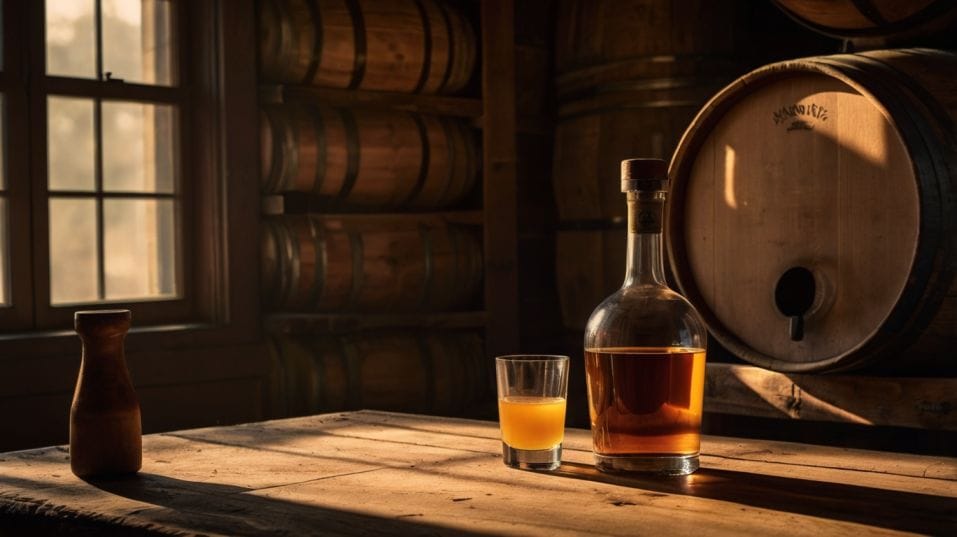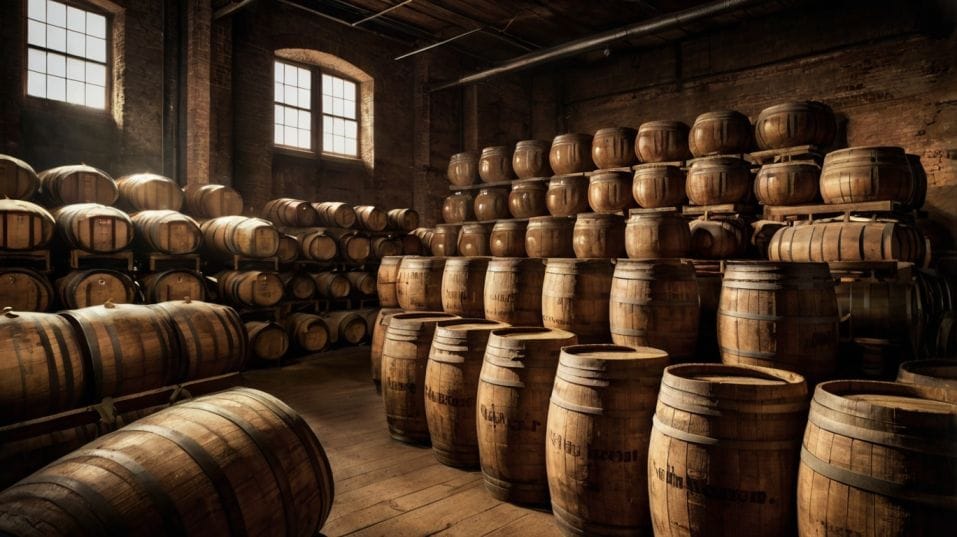Ex-Bourbon vs Ex-Sherry Casks: What’s the Difference?
Discover how ex-bourbon and ex-sherry casks shape whiskey flavor. Learn to taste smarter, collect better, and drink like a confident enthusiast.

What if the barrel mattered more than the bottle? For whiskey newcomers ready to level up, cask type isn’t trivia—it’s transformation.
Ex-bourbon and ex-sherry casks don’t just tweak flavor; they reshape the entire drinking experience.
Knowing the difference helps you choose better, taste sharper, and enjoy deeper. Once you understand what these casks do, you’ll stop guessing and start drinking with intent.
Cask Maturation Isn’t Passive—It’s Flavor Engineering
Forget the romantic idea that whiskey “just gets better” with age. It doesn’t. Age only tells you how long the spirit sat in wood—not how well that time was used.
The real secret lies in the cask itself: the type of wood, what it held before, and how it was treated.
The vast majority of whiskey flavor—estimates range from 60% to over 80%—comes from the barrel. That includes color, texture, finish, and a good chunk of the aroma.
So when a distiller chooses between an ex-bourbon cask and an ex-sherry cask, they’re making a deliberate choice about what kind of whiskey they want to create. You should be just as deliberate when choosing what to drink.

Ex-Bourbon Casks: Structure, Sweetness, and Transparency
Ex-bourbon barrels are the workhorse of the whiskey world. That’s not a slight—it’s a strength.
American whiskey law requires new, charred oak barrels for bourbon production, which means there’s a massive supply of “once-used” barrels ready for reuse around the world.
Scotch, Irish, Japanese, even emerging global distilleries rely heavily on them. These casks are usually made from American white oak—Quercus alba—which brings a tight grain and a natural sweetness.
The interior is heavily charred before use, creating a layer of carbon that acts like a flavor filter and a catalyst for chemical reactions inside the barrel.
What to Expect in Flavor
When whiskey is aged in ex-bourbon casks, you’re likely to get:
- Vanilla (from lignin breaking down during charring)
- Coconut and banana (from lactones in the wood)
- Toffee, honey, and citrus peel
- Soft spice—like cinnamon or clove—without overpowering the spirit
These barrels also preserve the clarity of the distillate. You’ll often hear tasters talk about “purity” or “precision” in a bourbon-aged malt.
That’s because the cask isn’t fighting for attention. It’s enhancing, not masking. If you want to understand what a distillery’s spirit actually tastes like, start with their ex-bourbon expressions. You’ll learn faster that way.
Ex-Sherry Casks: Complexity, Weight, and Boldness
Ex-sherry casks are a different animal. While they’re less common globally (and more expensive), their impact on whiskey is unmistakable.
These barrels previously held sherry—a fortified Spanish wine—and often come from cooperages in Jerez.
The wood is usually European oak (Quercus robur), which has a wider grain, more tannin, and a deeper, spicier personality than its American cousin.
Sherry-seasoned casks aren’t just "used wine barrels." In modern practice, most are custom-made for whiskey maturation—meaning they’re filled with sherry just for a few years to season the wood, not to sell the wine itself.
That’s important, because the goal isn’t to transfer the flavor of sherry per se—it’s to load the wood with sugars, acids, and oxidized compounds that evolve beautifully in whiskey.
Different Sherries, Different Results
Depending on the type of sherry used, you’ll get different flavor profiles:
- Oloroso: dry, nutty, with notes of walnut, leather, and spice
- Pedro Ximénez (PX): intensely sweet, with dark fruit, syrup, raisin, and chocolate
- Fino: lightest and driest, with almond and saline notes (less commonly used)
Sherry casks create whiskey that feels heavier, darker, and often more luxurious. The richness is undeniable—but it also introduces more variables.
Sherry-matured whiskies can lean sweet or dry, fruity or spicy, elegant or overbearing. When it’s done right, the balance is breathtaking. When it’s not, you’ll get a cloying, muddled mess.
Understanding Palate Impact: It’s Not Just Flavor, It’s Feel
One of the key differences between these two cask types isn’t just what you taste—but how you taste it.
Ex-bourbon casks often result in whiskeys with high drinkability. They feel crisp, linear, and precise. The finish tends to be dry and short-to-medium in length, which invites repeat sips.
Ex-sherry casks, on the other hand, coat the palate. They linger. They demand slower drinking.
There’s often more tannin grip, a rounder mid-palate, and a deeper finish that can shift between sweet, spicy, and bitter. They’re built for contemplation, not chugging.
Knowing this helps you pick the right whiskey for the right moment. Want something clean and refreshing after dinner? Bourbon cask. Looking for a fireside sipper with depth and mystery? Reach for the sherry bomb.
Blending Cask Types: Harmony or Chaos?
Many modern whiskies use a mix of ex-bourbon and ex-sherry casks. Sometimes they’re married together in a vat; other times, a whiskey is aged in one type and “finished” in the other.
The best blends show clear intent—a way to combine clarity and richness without sacrificing coherence.
But mixing cask types isn’t always an upgrade. Sometimes it muddies the profile or adds weight where it’s not needed.
This is where your palate becomes your best asset. Start asking: Is the wood complementing the spirit, or fighting with it? Does the finish feel clean or confused?
A collector with a good palate isn’t swayed by a fancy label that says “double matured.” They taste the structure behind the pitch.
Build a Smarter Whiskey Shelf
If you’re building a collection—whether it’s 5 bottles or 50—cask diversity matters. Not to chase checklists, but to train your palate and define your preferences.
Having both ex-bourbon and ex-sherry expressions on hand gives you tools to learn.
You’ll start to recognize patterns: which styles you crave when you're relaxed, which ones impress guests, and which ones just don’t click. That’s real collecting—building a shelf around your taste, not someone else’s scorecard.
Pro Tip: Taste Blind
Strip off the label, forget the branding, and let your senses lead. You’ll be shocked how much more confident you get, fast.
Final Thoughts
Ex-bourbon and ex-sherry casks aren’t just two different flavor profiles—they’re two different philosophies of maturation.
One highlights the spirit; the other transforms it. One is about clean expression; the other, deep emotion. You don’t have to pick a side—but you should know the rules of the game.
Here’s your next move: grab one whiskey aged entirely in ex-bourbon and another matured in ex-sherry. Taste them head-to-head.
No distractions. No ice. Let the differences hit you. Learn from them. That’s how you stop drinking whiskey like a tourist—and start drinking it like a pro.




